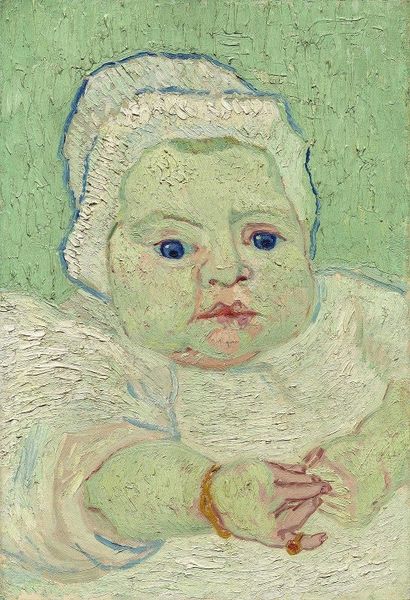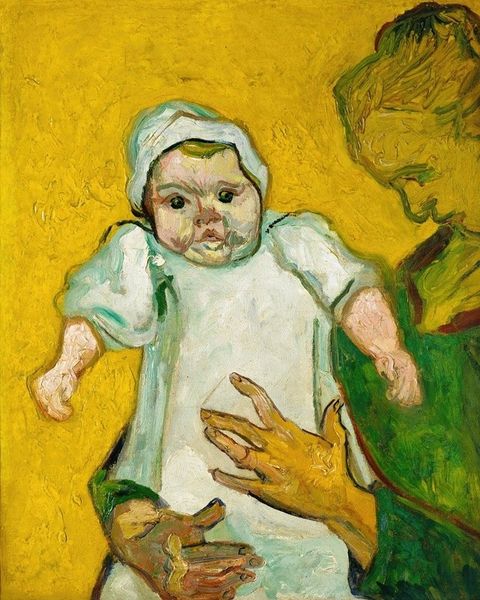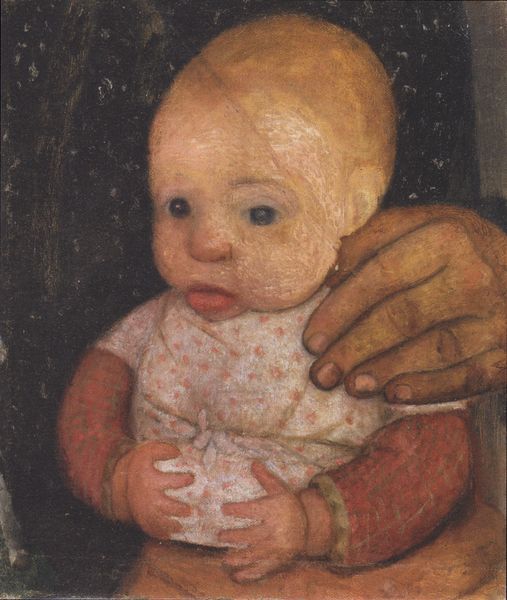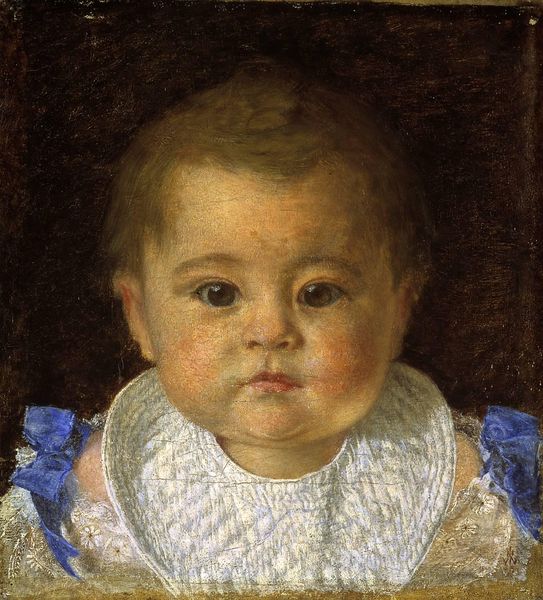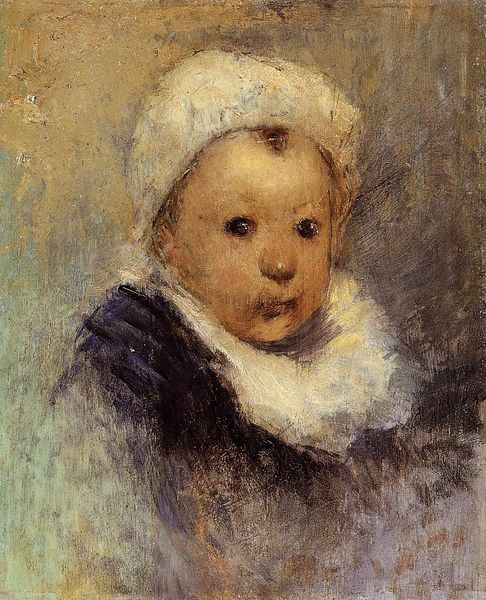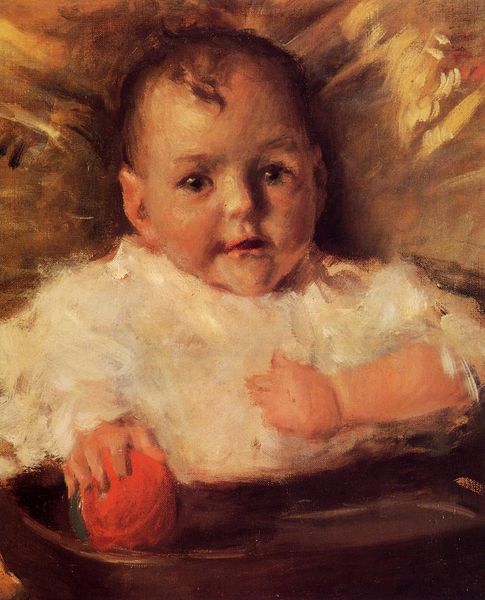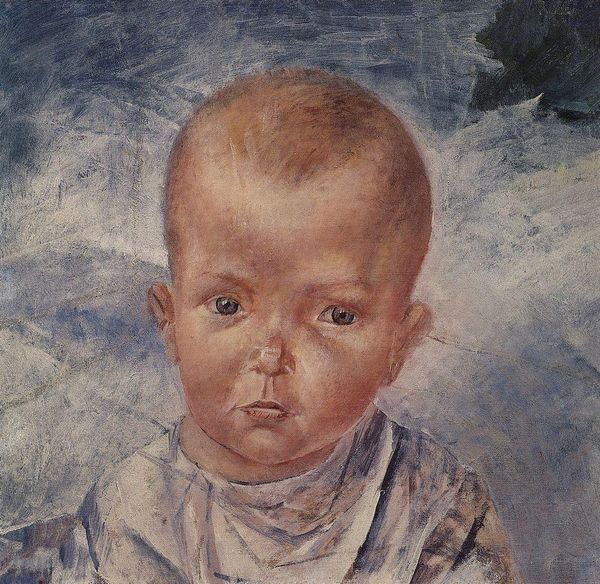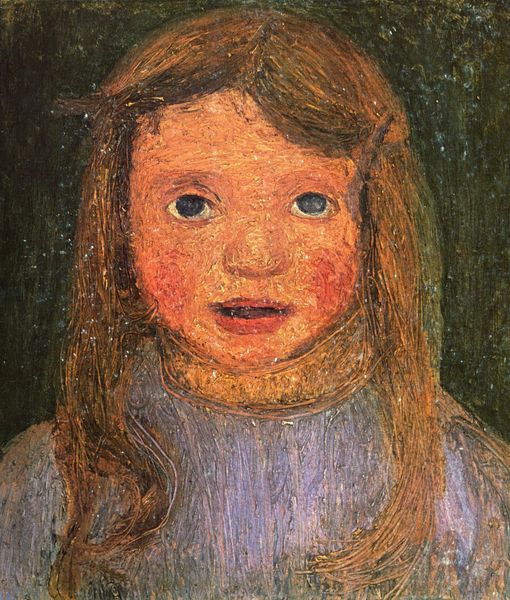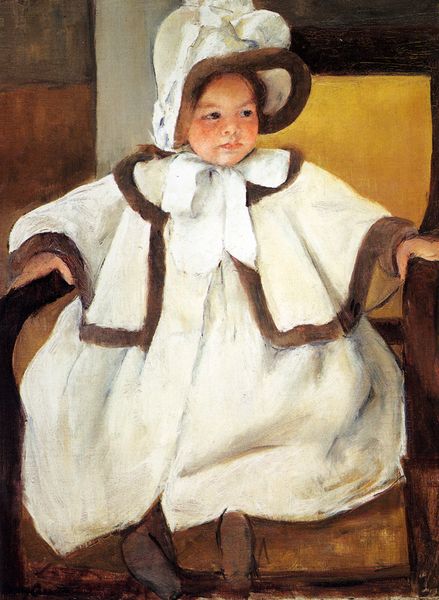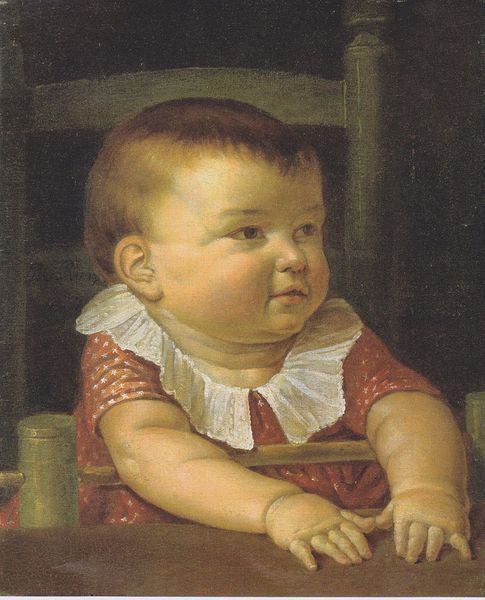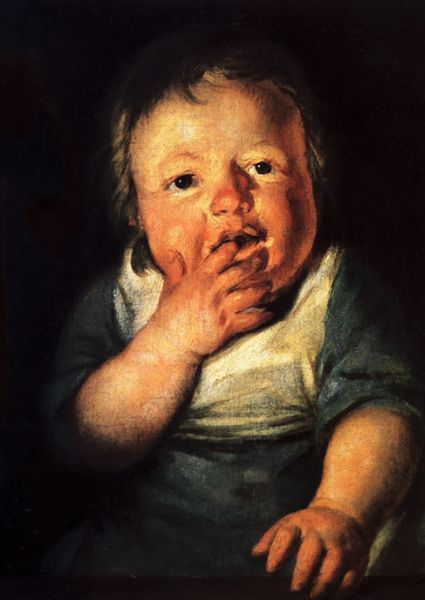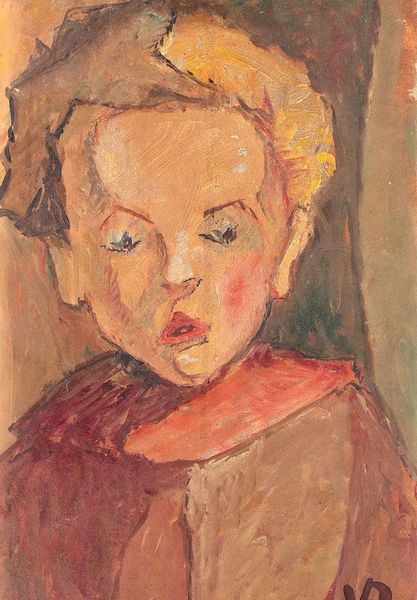
painting, oil-paint
#
portrait
#
painting
#
impressionism
#
oil-paint
#
oil painting
#
child
#
post-impressionism
#
portrait art
Dimensions: 24.5 x 35 cm
Copyright: Public domain
Vincent van Gogh painted this portrait of ‘The Baby Marcelle Roulin’ using oil on canvas during his time in France. Painted in 1888, the thick brushstrokes and bright colours are typical of Van Gogh’s post-impressionist style. But let’s consider what this image meant in its time. The late 19th century in France saw a rising interest in childhood, influenced by philosophical ideas of Rousseau and other enlightenment thinkers. In parallel, France’s population was in decline due to low birth rates. New laws were passed offering incentives for families to have more children, and images of childhood innocence became a powerful form of pro-natalist propaganda. Rather than depicting a generic baby, the artist has painted a portrait of the daughter of his friend, the postman Joseph Roulin. Van Gogh’s choice to paint a specific working-class child might be seen as a comment on the social structures of his time, an attempt to elevate the status of the common person in the hierarchy of art. To understand this image better, researchers might consider consulting family records, social histories, and studies of 19th-century French pro-natalist propaganda.
Comments
No comments
Be the first to comment and join the conversation on the ultimate creative platform.
